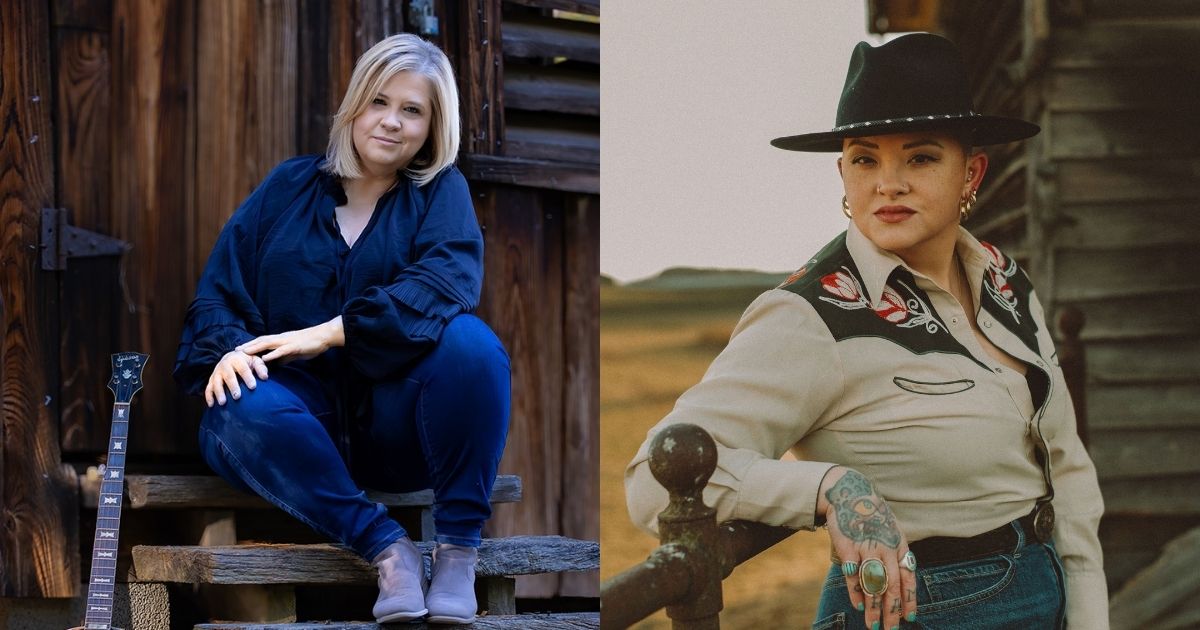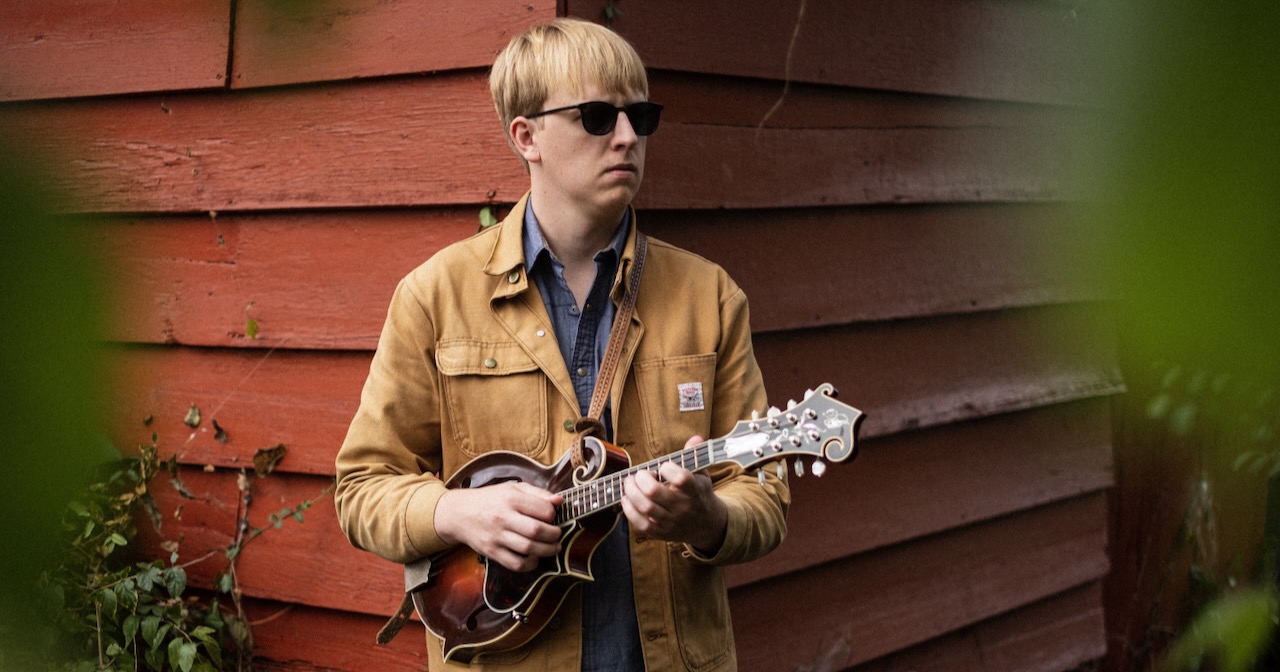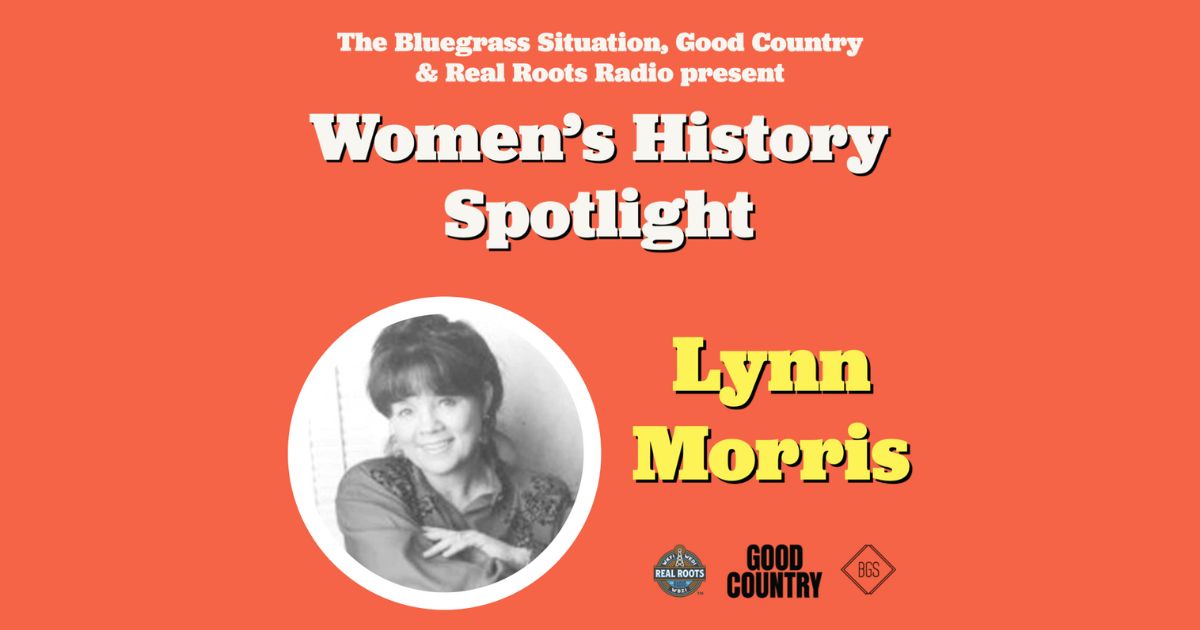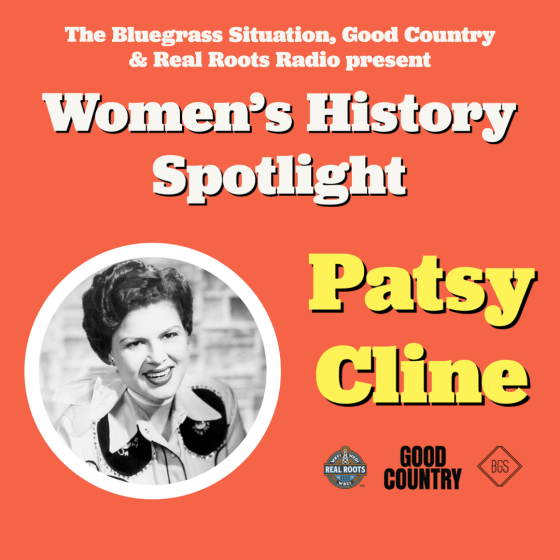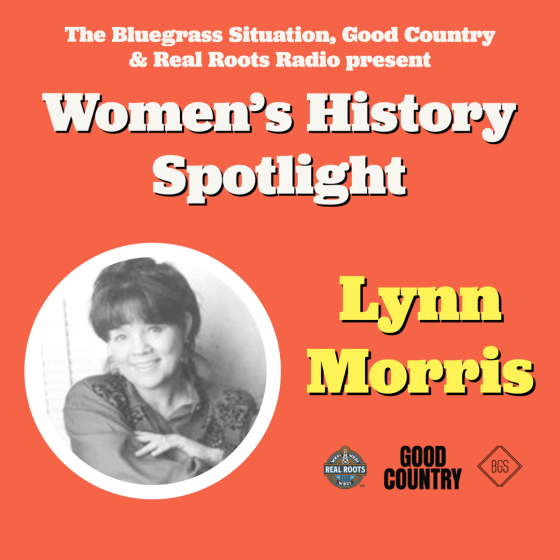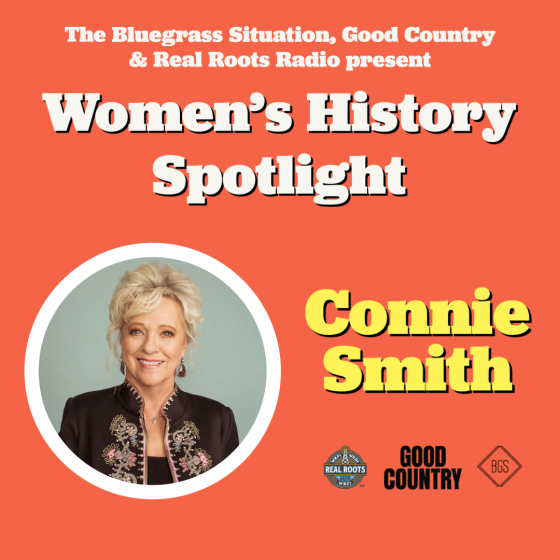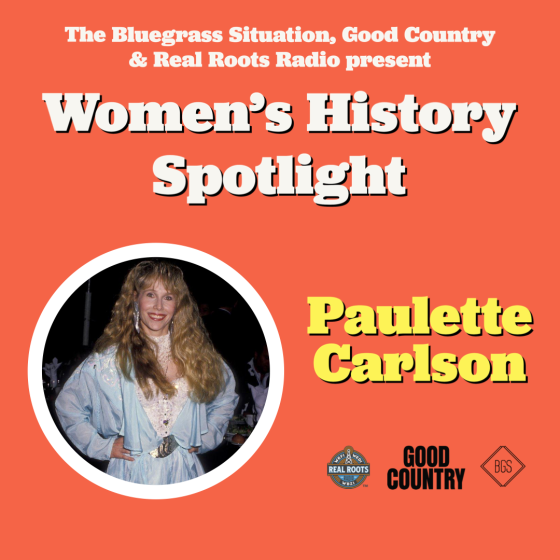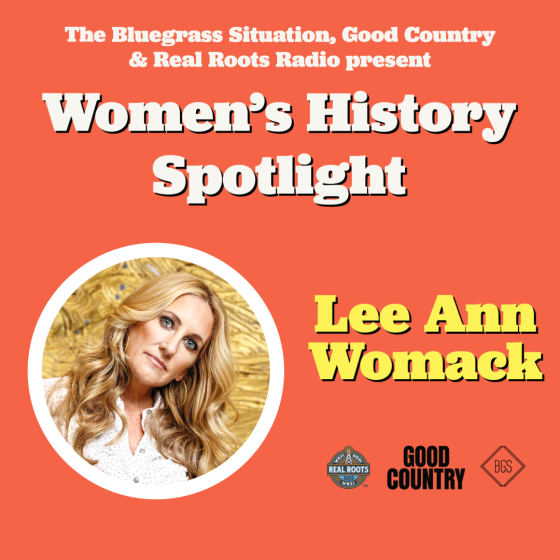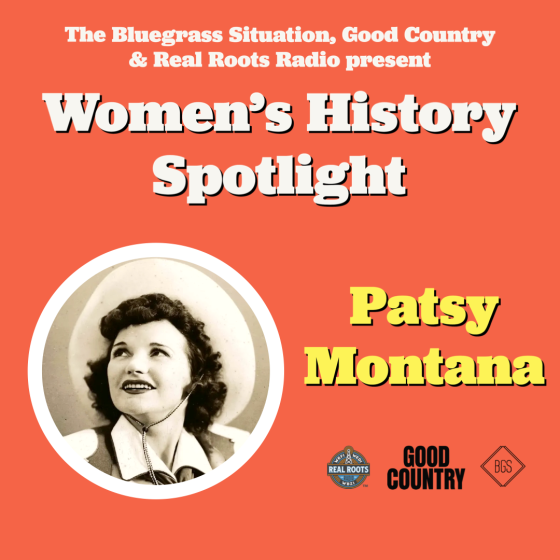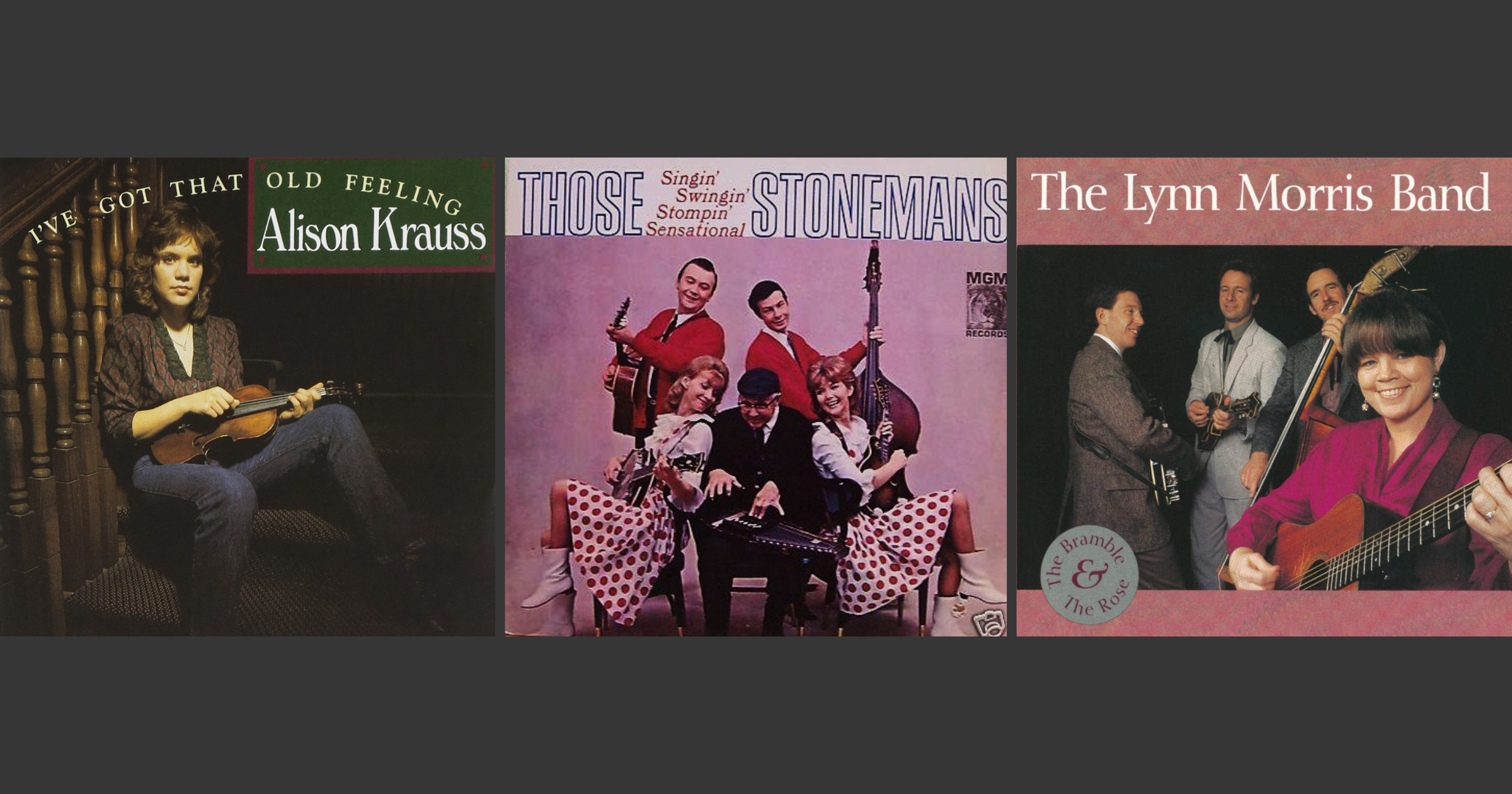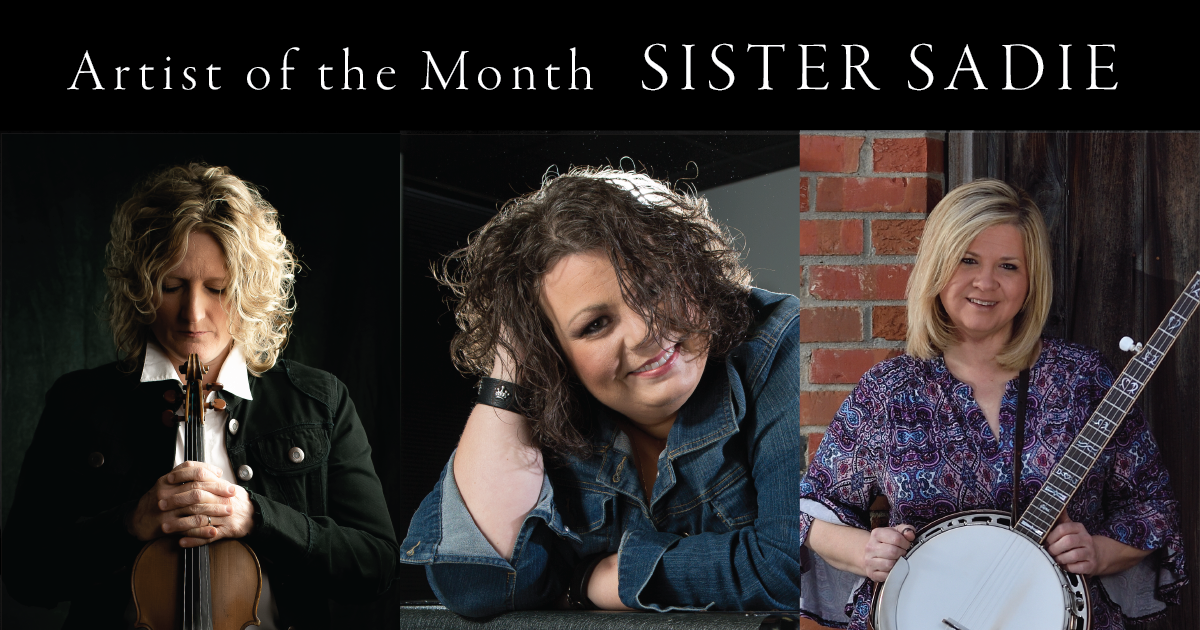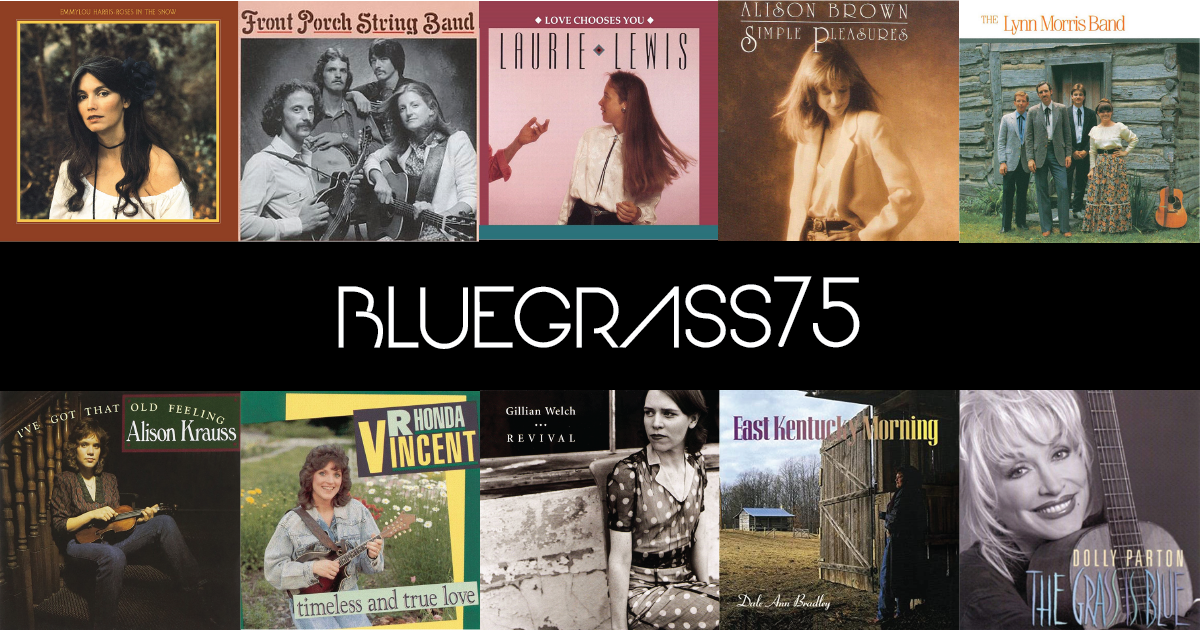This week, our collection of new music and premieres showcases cinematic stories, lush sounds, and the exact correct vibes all across the board.
Kicking us off, bluegrass banjo phenom Gena Britt is releasing her new single, “Goodbye to the Blues,” paying tribute to Lynn Morris as Britt and cohort get the blues and then gets them gone to a marching bluegrass beat. Fellow North Carolinian Aaron Burdett follows in a similar sonic space, painting a literal and metaphorical picture of spring and two little “Honeybees.” Don’t miss the track credits for both, as Britt and Burdett feature some incredible talents like John Meador, Kristin Scott Benson, Carley Arrowood, Jason Carter, and more on these cuts.
There’s excellent modern folk to be found below, as well. Sage & Aera – who you may know from WE DREAM DAWN – sing about freedom being found in surrender on “Let It Rain,” a song with a deep and broad approach to indie string folk. Singer-songwriter Sam Robbins releases his new album today and its title track, which is included here, is “So Much I Still Don’t See,” a sort of troubadour story song that’s observational and political but, most notably, is compassionate.
And you won’t want to miss Rebecca Porter’s new single, “Shadow of Doubt,” which comes today in tandem with the announcement of her upcoming debut album, Roll With The Punches, out August 8. This is gunslinger, black-and-white western film, black-cowboy-hat-wearing country (& western!) that’s effortlessly timeless while overtly contemporary and forward-looking.
From bluegrass to indie folk to good country, You Gotta Hear This!
Gena Britt, “Goodbye to the Blues”
Artist: Gena Britt
Hometown: Star, North Carolina
Song: “Goodbye To The Blues”
Release Date: April 25, 2025
Label: Mountain Home Music Company
In Their Words: “I’m so excited about ‘Goodbye to the Blues.’ This amazing band helped me bring this to life in the studio. What an absolute dream band! With the help of one of my best friends Tina Steffey, we were able to pay tribute to the great Lynn Morris’ clawhammer banjo playing from her original cut. I’m a huge Lynn Morris and Marshall Wilborn fan and I hope everyone loves this as much as I do.” – Gena Britt
Track Credits:
Gena Britt –Banjo, lead vocal
John Meador – Acoustic guitar, harmony vocal
Alan Bartram – Upright bass, harmony vocal
Jason Carter – Fiddles
Jonathan Dillon – Mandolin
Tina Steffey – Clawhammer banjo
Tony Creasman – Drums
Aaron Burdett, “Honeybees”
Artist: Aaron Burdett
Hometown: Saluda, North Carolina
Song: “Honeybees”
Release Date: April 25, 2025
Label: Organic Records
In Their Words: “In the summer of 2024 I was talking with my friend Bob, who’s kept bees and has family who does the same, and he said something about noticing ‘two honeybees on my sleeve.’ He was remarking about the time of season and wondering what their deal was. It got me thinking about the ambiguity of any given moment in time. Anything could have brought them there and they could be going on in any number of directions after. I like taking note of noteworthy moments, and any moment can be noteworthy if I look at it in just the right way.” – Aaron Burdett
Track Credits:
Aaron Burdett –Lead vocal, acoustic guitar
Kristin Scott Benson – Banjo
Carley Arrowood – Fiddle
Tristan Scroggins – Mandolin
Jon Weisberger – Upright bass
Wendy Hickman – Harmony vocal
Travis Book – Harmony vocal
Rebecca Porter, “Shadow of Doubt”
Artist: Rebecca Porter
Hometown: Harrisonburg, Virginia
Song: “Shadow of Doubt”
Album: Roll With The Punches
Release Date: April 25, 2025 (single); August 8, 2025 (album)
Label: Holding All The Roses
In Their Words: “The rattle of strums on my 1965 Gibson J-45 and the deep breaths thrust into the air as ‘oohs’ signal a shift and I hope listeners know, ‘Shadow of Doubt’ is a deeply personal song. It details events and relationships that were swept under the rug for years, but despite the cloak of ignorance, the waves of shame and emotional turmoil continued to rage. Ignoring that time only made the internal chaos sharper. I wrote this song to build a new framework and find closure for that pivotal point in my life. No one held my power captive any longer, and the internal chaos that shattered each day was released.
“This track captures the essence of Roll With the Punches. The record details snapshots of my life in song, framed through our interpretation and creative inspiration of western cinema. A fervent exploration of roots’ tones and instrumentations. Much like the rugged characters in western films, the album unfolds through tough moments of enlightenment, self-reflection, and perseverance. Within the walls of ‘Shadow of Doubt,’ listeners navigate uncomfortable truths including some of my darkest moments and ultimately realize that even while bloody or bruised, it is still possible to soar.” – Rebecca Porter
Track Credits:
Rebecca Porter – Acoustic guitar, vocals, songwriter
Ben Bailey – Baritone guitar, electric guitar
Ben Schlabach – Bass
Scott Whitten – Drums
Perry Blosser – Fiddle
Danny Gibney – Keys
Jason Summer – Pedal steel
Jacob Briggs – Percussion
Sam Robbins, “So Much I Still Don’t See”
Artist: Sam Robbins
Hometown: Boston, Massachusetts
Song: “So Much I Still Don’t See”
Album: So Much I Still Don’t See
Release Date: April 25, 2025
In Their Words: “‘So Much I Still Don’t See’ is the title track and my favorite song on the album. It’s really the culmination of the whole album. It’s written about the quiet inequalities in this country that I’ve always known were there, but have seen so much more clearly as I’ve been touring over the past few years.
“It is a political song, but it’s a subtle one – I didn’t want this one to bash you over the head, I wanted it to be akin to a conversation with a friend. The more I’ve travelled, the more people and cultures I’ve seen that are so different from mine, I’ve seen how little I know. To me, this is the essence of the entire album.” – Sam Robbins
Sage & Aera, “Let It Rain”
Artist: Sage & Aera
Hometown: Waldron, Kansas
Song: “Let It Rain”
Album: Love Undoubtedly Underlies Everything
Release Date: April 25, 2025 (single); August 10, 2025 (album)
Label: MATRKA
In Their Words: “This is a song about resilience, not through striving but through surrender. There is a point in life when surrender is the only door to freedom. This door usually appears when our suffering reaches some inescapable peak. Even if we are only allowed a fleeting glimpse, this glimpse, more often than not, is transformative by nature. In this way, suffering is our greatest teacher. I don’t claim to capture the unspeakable beauty of such things through song but I will continue to try.
“‘Let It Rain’ began sometime around 2013, while I was still in Colorado playing with Elephant Revival, and at least a year before we (Sage & Aera) began playing as WE DREAM DAWN. These recordings are from 2016-2020 when WE DREAM DAWN grew to include GRAMMY Award winning Steven Vidaic, Mark Levy, and Darren Garvey. Currently we are touring as an acoustic duo to support this epic passion project of a record called Love Undoubtedly Underlies Everything.” – Sage Thomas Cook
Track Credits:
Sage Thomas Cook – Acoustic Guitar, vocals, production
Aera Fox – Bass guitar, moog, vocals
Steven Vidaic – Keys, backup vocals, mixing
Mark Levy – Drums
Darren Garvey – Percussion
Mike Yach – Mastering
Photo Credit: Gena Britt by Laci Mack; Rebecca Porter by Heather Goodloe.
